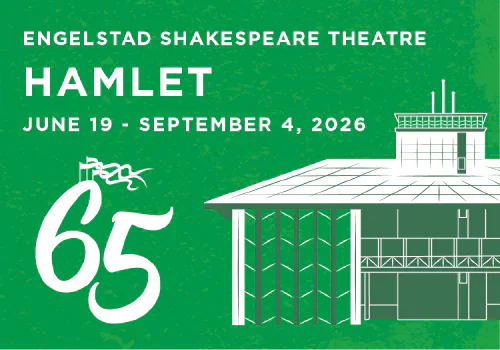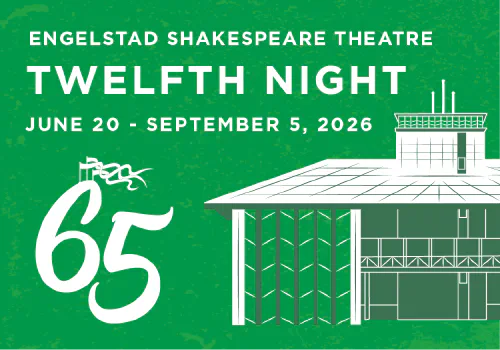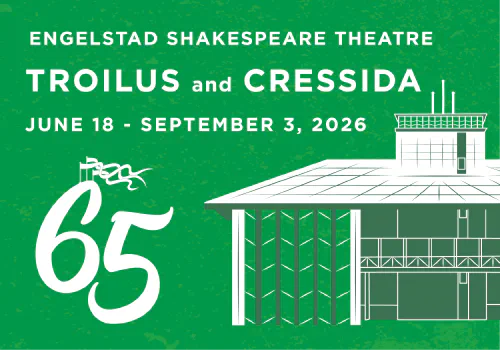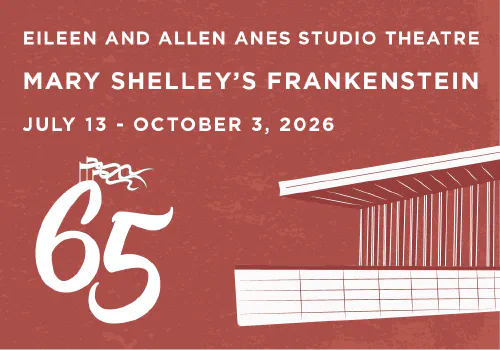By Michael Flachmann
Shakespeare’s The Tempest (1611), like so many of his later plays, features an intense storm scene which profoundly restructures the plot and characters within their dramatic universe. Through his “so potent art” (5.1.50), Prospero causes a shipwreck at the outset of the action, marooning on his island not only his two most bitter enemies, but also the future husband of his beloved daughter, Miranda. Suspended between his lust for revenge and his need for regeneration and renewal, Shakespeare’s magician-hero forgives his adversaries, bestows his daughter upon the future king of Naples, and then abjures his “art” by breaking his magic staff and drowning his book of charms “deeper than did ever plummet sound” (5.1.56).
Not surprisingly for a play so devoted to tempests both physical and emotional, Shakespeare’s comedy has elicited a storm of controversy from a number of different sources during the past four centuries. Even the long-accepted conventional interpretation of the play as Shakespeare’s farewell to the stage, complete with Prospero as playwright renouncing his theatrical magic, has recently come under close scrutiny by bibliographers who believe the script was written before Henry VIII and The Two Noble Kinsmen and may even have preceded The Winter’s Tale. So much for dramatic tradition!
Five areas of disagreement that offer particular fascination to modern readers and theatregoers include characterization, colonization, images of the new world, magic, and the masque. Through his soaring poetry, Shakespeare dramatizes the inherent conflicts within each of these categories, organizing his play around a series of debates that are as intriguing today as they were nearly four hundred years ago. Since The Tempest is a theatrical “script,” however, it can only be completely realized through performance. Solely in that artistic venue can the infinity of choices available to readers of the play be narrowed and refined to a single production, unique to the particular place, time, and audience of the Utah Shakespeare Festival during the summer of 1995 in Cedar City.
This wide range of interpretive possibilities is nowhere more startling than in the contrast between such characters as Prospero and his “abhorred slave” (1.2.351) Caliban. Prospero, for example, has been identified variously in recent theatrical productions and in scholarly books and articles as a noble ruler, tyrant, necromancer, neoplatonic scientist, imperialist, and magician, while portrayals of Caliban have ranged from ugly, deformed savage to sensitive, victimized new-world native. The precise degree of interpretation of these and such other seminal characters as Ariel, Miranda, Ferdinand, Antonio, Alonzo, and Gonzalo will depend, of course, upon the director, design team, and individual actors at the Festival this summer, since they will make all the necessary decisions that must transform the play from “page” to “stage.”
Likewise, any good theatrical performance of the script must on some level respond to the charge that Prospero has stolen the island from its original inhabitants in the same manner that Renaissance England was slowly beginning to colonize much of the civilized world. Caliban, whose name is an anagram of “cannibal,” had previously “owned” the island with his dam, Sycorax, and had his power and authority over the territory usurped in much the same way Antonio had stolen Prospero’s dukedom in Milan. As the great popularity of Montaigne’s essay “Of the Cannibals” (translated into English by John Florio in 1603) indicates, the colonization of relatively unspoiled lands where pre-lapsarian natives led an Edenic existence had become a wildly controversial topic by the later stages of Shakespeare’s career. What were the proper moral and ethical responsibilities of colonial exploration? And what obligation, if any, did the invaders have in educating and Christianizing the primitive inhabitants they found during their travels? Perhaps, the play seems to suggest ironically, it is the Europeans who are savage, predatory, and inhuman in their enslavement of indigenous citizens like Caliban. Such Shakespearean debates about colonization are always played out within the larger and more provocative context of images of the new world. As Gonzalo’s utopian monologue in act 2, scene 1 implies, Renaissance Europeans were fascinated by the concept of discovering a new, pristine paradise which would provide a fresh opportunity to experiment with laws and social customs not already encrusted by centuries of English tradition. Just four years prior to the first performance of The Tempest, in fact, British explorers had founded Jamestown in 1607, and in 1609 they sent a fleet of four hundred new colonists across the Atlantic who, after being lashed by a ferocious storm, were forced to land in Bermuda where they spent the winter. Prospero’s island, hard by these “still-vexed Bermoothes [Bermudas]” (1.2.229), provides a wonderful “new world” (5.1.183) laboratory in which the various theories of colonization and civilization popular during the Renaissance could be dramatized before an attentive audience.
Much of Prospero’s political and moral power on the island is accomplished through magic, of course, which introduces yet another important area in which modern productions of the play must make some specific choices between extreme interpretations that are often quite contradictory in their aim and scope. In one sense, the magic of The Tempest is Baconian in origin: a systematic study of nature which leads to the understanding and control of all its forces. On another level, magic can be portrayed in the play as pure theatre and illusion: both a source of power for Prospero the artist and a retreat from its demands and responsibilities. And finally, magic can be associated with the black arts, as it is in Macbeth and other plays, where it is often depicted as profane, irrational, unholy, and malicious. Prospero’s theatrical magic may, in fact, contain elements of all three of these aspects of enchantment, though each actor playing the role must at some point decide which of the trio will be most heavily weighted in his performance.
One final dramatic crux in The Tempest requiring careful and deliberate choices by the production team will be the illusion of the masque in act 4, scene 1, the magnificent culmination of Prospero’s magic, which can either be a genuine celebration of Miranda’s betrothal or a boastful display of power from a retiring sorcerer who desperately wants to preserve his authority and position in Milan by providing a priceless bride for the royal husband of his choice. As Sir Walter Raleigh’s selection of the name “Virginia” for his new American colony implied, virginity was seen as an attribute of power, a possession worthy of kings and queens. In this sense, Prospero’s masque may also be viewed as a victory ceremony for keeping Miranda’s chastity safe from Caliban’s lustful desire to “people” the island with their children. Through such extra-textual elements as music, costuming, lighting, set design, props, blocking, and dance, each different production of the play will create its own masque as a unique and special blend of illusion, celebration, braggadocio, and ceremony appropriate to the director’s concept and the actors’ skills and abilities.
The brilliance of Shakespeare is that all these various interpretations–and others too numerous to mention in such a brief article–coexist harmoniously within the script of such a play. Conversely, much of the agony and exhilaration of directingThe Tempest accrues from the fact that the production will be sequentially defined by the hard choices made between these different interpretations at each phase of the rehearsal process. This is, of course, the collaborative “rough magic” of theatre. Will these choices be the same ones you would have selected? Will they fulfill your expectations of the play, or will they challenge, amaze, and delight you with their distinctive creative energy? There’s only one way to find out, of course: Come see the show!










